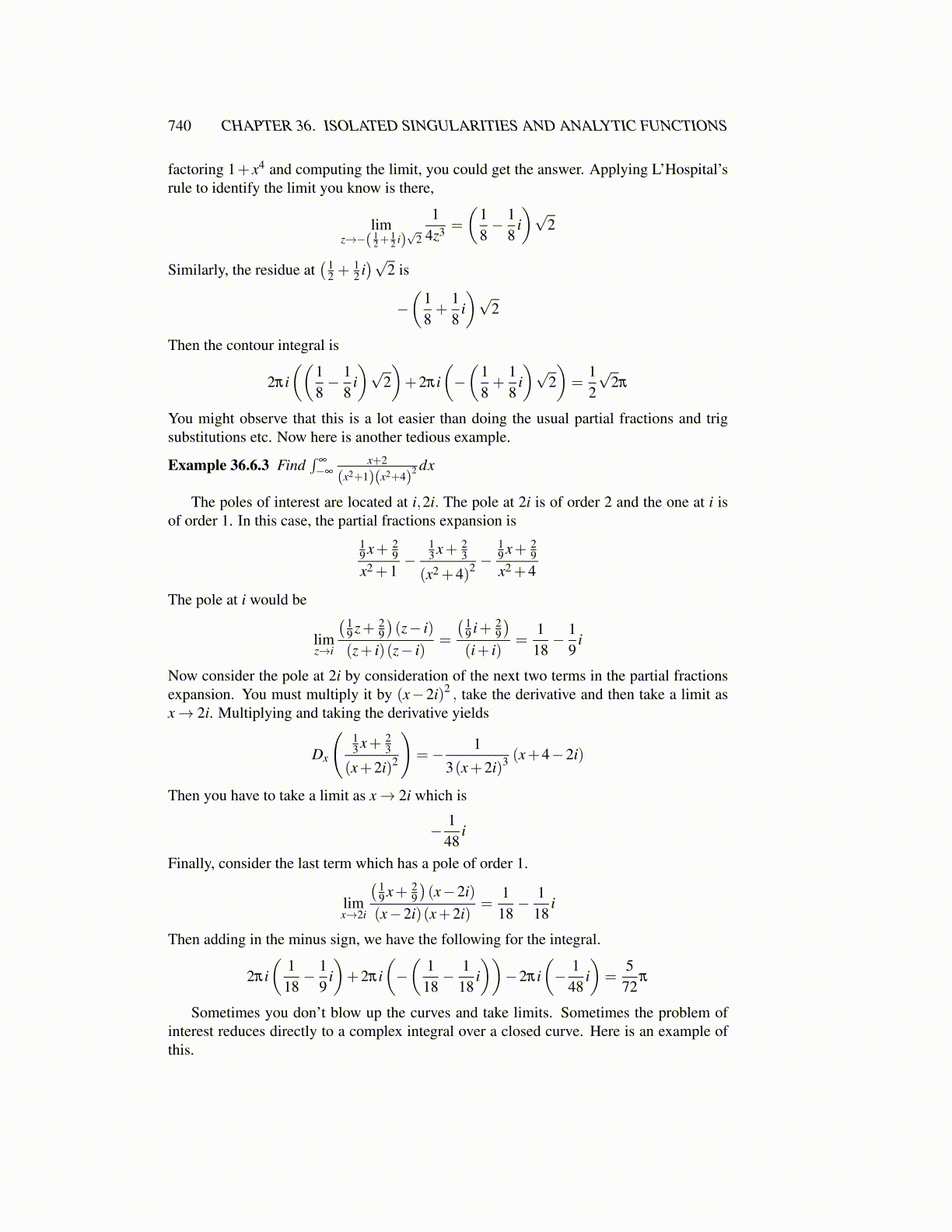
740 CHAPTER 36. ISOLATED SINGULARITIES AND ANALYTIC FUNCTIONS
factoring 1+ x4 and computing the limit, you could get the answer. Applying L’Hospital’srule to identify the limit you know is there,
limz→−( 1
2+12 i)√
2
14z3 =
(18− 1
8i)√
2
Similarly, the residue at( 1
2 +12 i)√
2 is
−(
18+
18
i)√
2
Then the contour integral is
2πi((
18− 1
8i)√
2)+2πi
(−(
18+
18
i)√
2)=
12
√2π
You might observe that this is a lot easier than doing the usual partial fractions and trigsubstitutions etc. Now here is another tedious example.
Example 36.6.3 Find∫
∞
−∞
x+2
(x2+1)(x2+4)2 dx
The poles of interest are located at i,2i. The pole at 2i is of order 2 and the one at i isof order 1. In this case, the partial fractions expansion is
19 x+ 2
9x2 +1
−13 x+ 2
3
(x2 +4)2 −19 x+ 2
9x2 +4
The pole at i would be
limz→i
( 19 z+ 2
9
)(z− i)
(z+ i)(z− i)=
( 19 i+ 2
9
)(i+ i)
=118− 1
9i
Now consider the pole at 2i by consideration of the next two terms in the partial fractionsexpansion. You must multiply it by (x−2i)2 , take the derivative and then take a limit asx→ 2i. Multiplying and taking the derivative yields
Dx
(13 x+ 2
3
(x+2i)2
)=− 1
3(x+2i)3 (x+4−2i)
Then you have to take a limit as x→ 2i which is
− 148
i
Finally, consider the last term which has a pole of order 1.
limx→2i
( 19 x+ 2
9
)(x−2i)
(x−2i)(x+2i)=
118− 1
18i
Then adding in the minus sign, we have the following for the integral.
2πi(
118− 1
9i)+2πi
(−(
118− 1
18i))−2πi
(− 1
48i)=
572
π
Sometimes you don’t blow up the curves and take limits. Sometimes the problem ofinterest reduces directly to a complex integral over a closed curve. Here is an example ofthis.